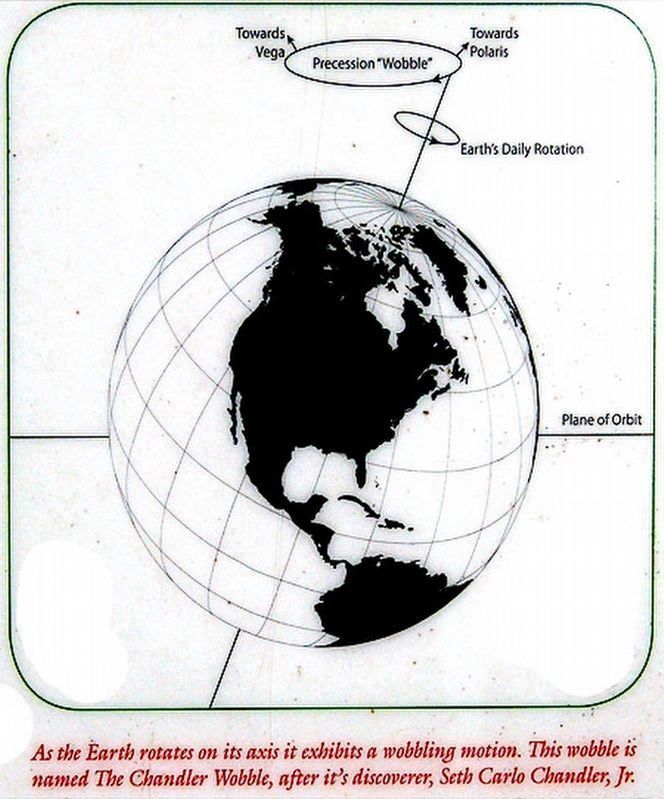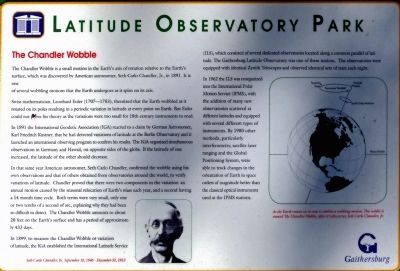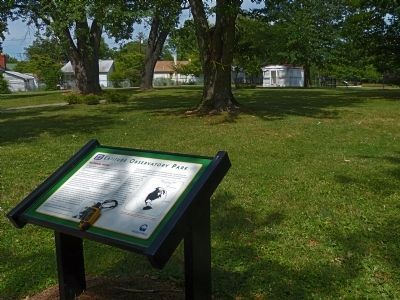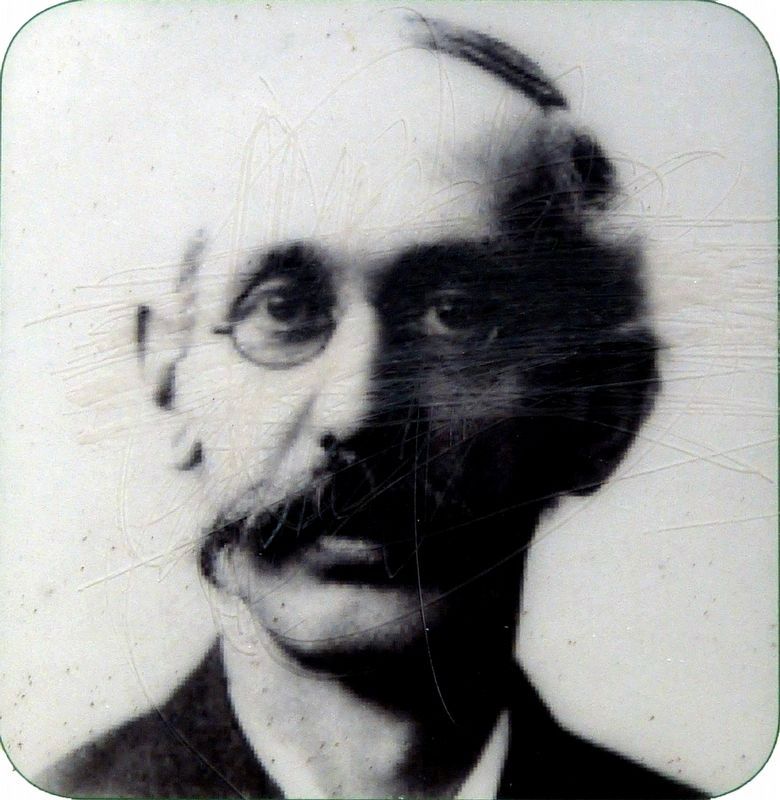Gaithersburg in Montgomery County, Maryland — The American Northeast (Mid-Atlantic)
The Chandler Wobble
Latitude Observatory Park
Swiss mathematician, Leonhard Euler (1707--1783), theorized that the Earth wobbled as it rotated on its poles resulting in a periodic variation in latitude at every point on Earth. But Euler could not prove his theory as the variations were too small for 18th century instruments to read.
In 1891 the International Geodetic Association (IGA) reacted to a claim by German Astronomer, Karl Friedrich Kustner, that he had detected variations in latitude at the Berlin Observatory and it launched an international observing program to confirm his results. The IGA organized simultaneous observations in Germany and Hawaii, on opposite sides of the globe. If the latitude of one increased, the latitude of the other should decrease.
In that same year American astronomer, Seth Carlo Chandler, confirmed the wobble using his own observations and that of others obtained from observatories around the world, to verify annual motion caused by seasonal relocation of Earth's mass each year, and a second having a 14 month cycle. Both terms were very small, only one or two tenths of a second of arc, explaining why they had been so difficult to detect. The Chandler Wobble amounts to about 20 feet on the Earth's surface and has a period of 433 days.
In 1899, to measure the Chandler Wobble or variation of latitude, the IGA established the International Latitude Service (ILS), which consisted of several dedicated observatories located along a common parallel of latitude. The Gaithersburg Latitude Observatory was one of these stations. The observatories were equipped with identical Zenith Telescopes and observed sets of stars each night.
In 1962 the ILS was reorganized into the International Polar Motion Service (IOMS), with the addition of many new observatories scattered at different latitudes and equipped with several types of instruments. By 1980 other methods, particularly interferometry, satellite laser ranging and the Global Positioning System, were able to track changes in the orientation of Earth in space orders of magnitude better than the classical optical instruments used at the IPMS stations.
Erected 2011 by the City of Gaithersburg.
Topics. This historical marker is listed in this topic list: Science & Medicine. A significant historical year for this entry is 1891.
Location. 39° 8.193′ N, 77° 11.958′ W. Marker is in Gaithersburg, Maryland, in Montgomery County. Marker is on DeSellum Avenue, 0.2 miles south of George Street, on the right when traveling south. Touch for map. Marker is at or near this postal address: 100 DeSellum Avenue, Gaithersburg MD 20877, United States of America. Touch for directions.
Other nearby markers. At least 8 other markers are within walking distance of this marker. A Night at the Gaithersburg Latitude Observatory (within shouting distance of this marker); Meridian Mark Pier and Geodetic Survey Monuments (within shouting distance of this marker); The Observatory (within shouting distance of this marker); History and Purpose of the Gaithersburg Latitude Observatory (about 300 feet away, measured in a direct line); General Edward Braddock (approx. 0.3 miles away); DeSellum Family Cemetery (approx. 0.3 miles away); The Gaithersburg Wye (approx. 0.4 miles away); Second Lieutenant William J. Christman, III (approx. 0.4 miles away). Touch for a list and map of all markers in Gaithersburg.
Also see . . . Wandering Pole, Wobbling Grid. (PDF) By Trudy E. Bell, Spring 2016, The Bent of Tau Beta Pi. (Submitted on July 11, 2019, by Allen C. Browne of Silver Spring, Maryland.)
Additional keywords. Geodesy

Photographed By Allen C. Browne, June 23, 2012
4. The Chandler Wobble
As the Earth rotates on its axis it exhibits a wobbling motion. The wobble is named the Chandler Wobble, after it's discoverer, Seth Carlo Chandler, Jr.
This diagram may be somewhat misleading in that it fails to distinguish the Chandler wobble from precession.Close-up of image on marker
This diagram may be somewhat misleading in that it fails to distinguish the Chandler wobble from precession.
Credits. This page was last revised on September 22, 2019. It was originally submitted on July 1, 2012, by Allen C. Browne of Silver Spring, Maryland. This page has been viewed 636 times since then and 30 times this year. Photos: 1. submitted on July 1, 2012, by Allen C. Browne of Silver Spring, Maryland. 2. submitted on July 17, 2012, by Allen C. Browne of Silver Spring, Maryland. 3, 4. submitted on July 11, 2019, by Allen C. Browne of Silver Spring, Maryland. • Kevin W. was the editor who published this page.


